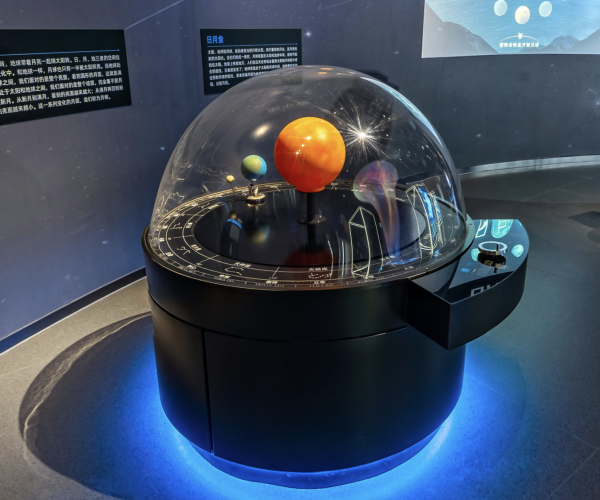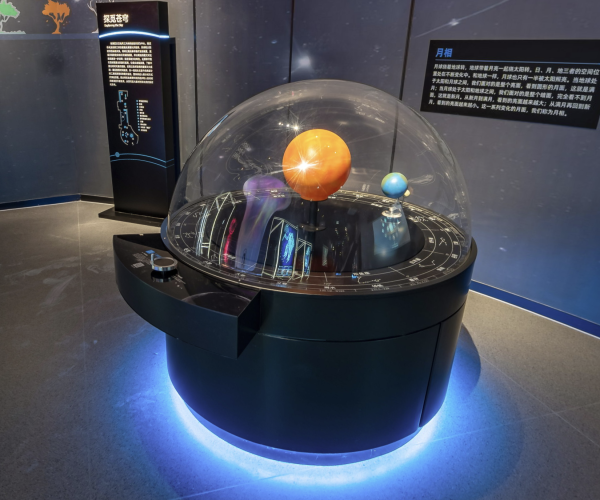

Sun, Earth, and Moon Exhibit
Sun, Earth and moon interactive exhibit allows visitors to explore the dynamic relationship between our planet, its moon, and the Sun. By rotating a handle, guests can set the celestial bodies into motion, visually demonstrating the principles of orbital mechanics, eclipses, and the lunar cycle.
Visitor Experience
At the core of the Sun, Earth, and Moon Exhibit is an intuitive mechanical system that brings the ecliptic movement of these three celestial bodies to life. Visitors can:
- Rotate a handle to initiate the orbital movement of the Earth around the Sun and the Moon around the Earth.
- Observe how Earth’s tilt and orbit affect seasons as it moves along its elliptical path.
- See the phases of the Moon as it orbits Earth, revealing how sunlight creates different lunar appearances.
- Understand solar and lunar eclipses, where the alignment of these bodies casts shadows that darken the Sun or Moon.
This hands-on approach makes complex astronomical concepts tangible, enhancing engagement and comprehension.
Lessons Learned
The Sun, Earth, and Moon system is fundamental to understanding day and night cycles, seasons, lunar phases, and eclipses. This exhibit illustrates key scientific principles:
- Earth’s Orbit & Seasons – Earth revolves around the Sun in an elliptical path while its tilted axis (23.5°) creates seasonal variations in sunlight distribution.
- Moon’s Orbit & Phases – The Moon orbits Earth every ~29.5 days, progressing through phases from new moon to full moon as sunlight illuminates different portions of its surface.
- Eclipses – When the Earth, Moon, and Sun align, either a lunar eclipse (Earth’s shadow darkens the Moon) or a solar eclipse (the Moon blocks the Sun) occurs.
Visitors will gain insights into:
- The mechanics of Earth’s orbit and axial tilt in creating seasons.
- How the Moon’s orbit affects tides, phases, and eclipses.
- The relationship between celestial alignments and solar/lunar eclipses.
- How ancient civilizations used astronomical observations to develop calendars.
By providing a visual and interactive representation of these movements, the exhibit deepens visitors’ appreciation of the forces governing our solar system.
Target Age
- From 5

